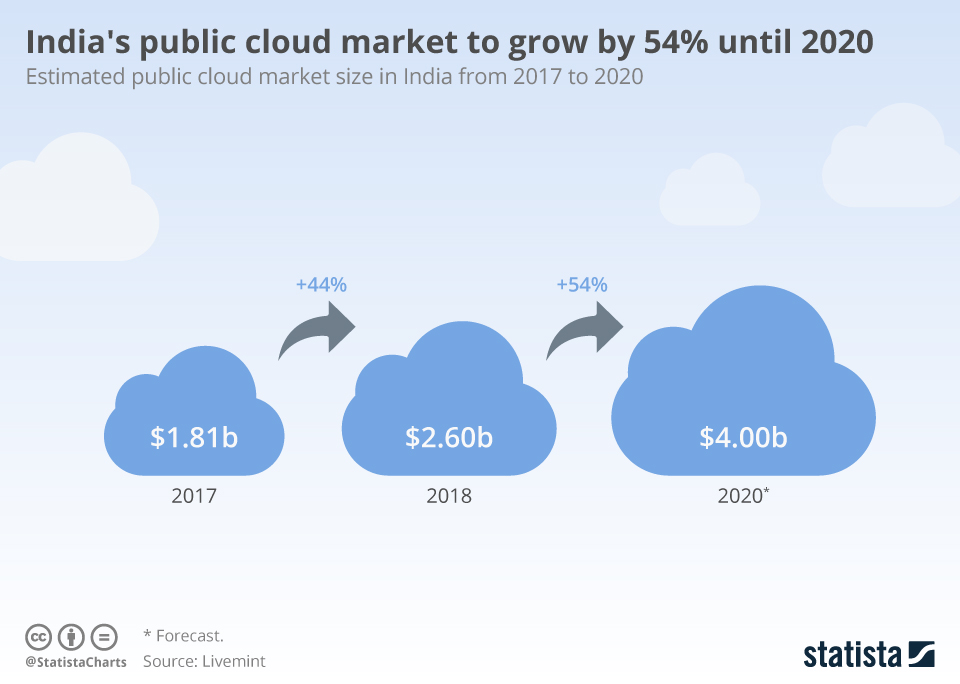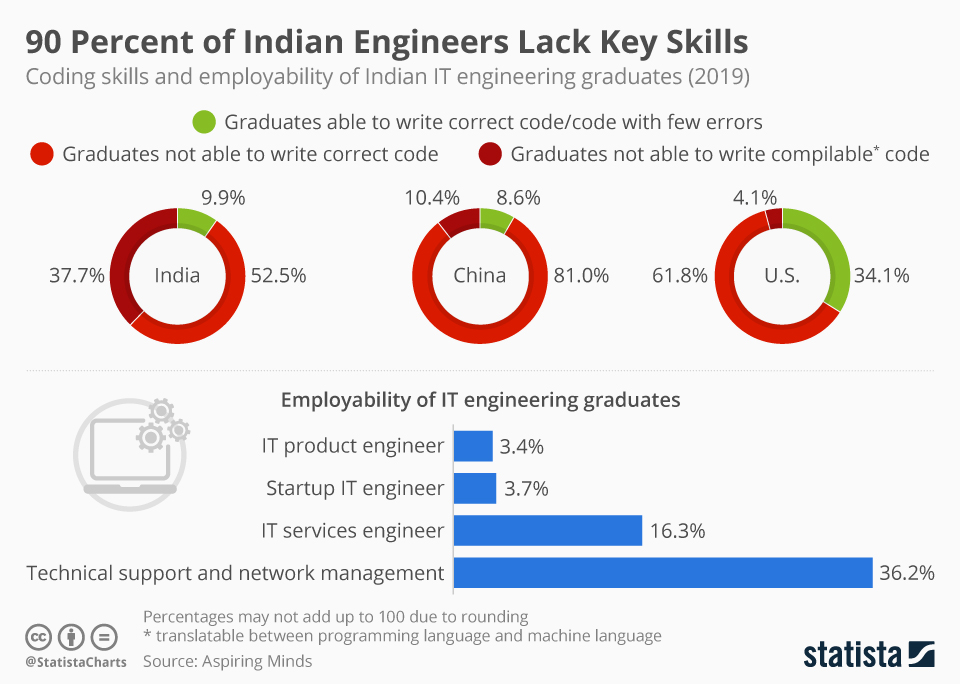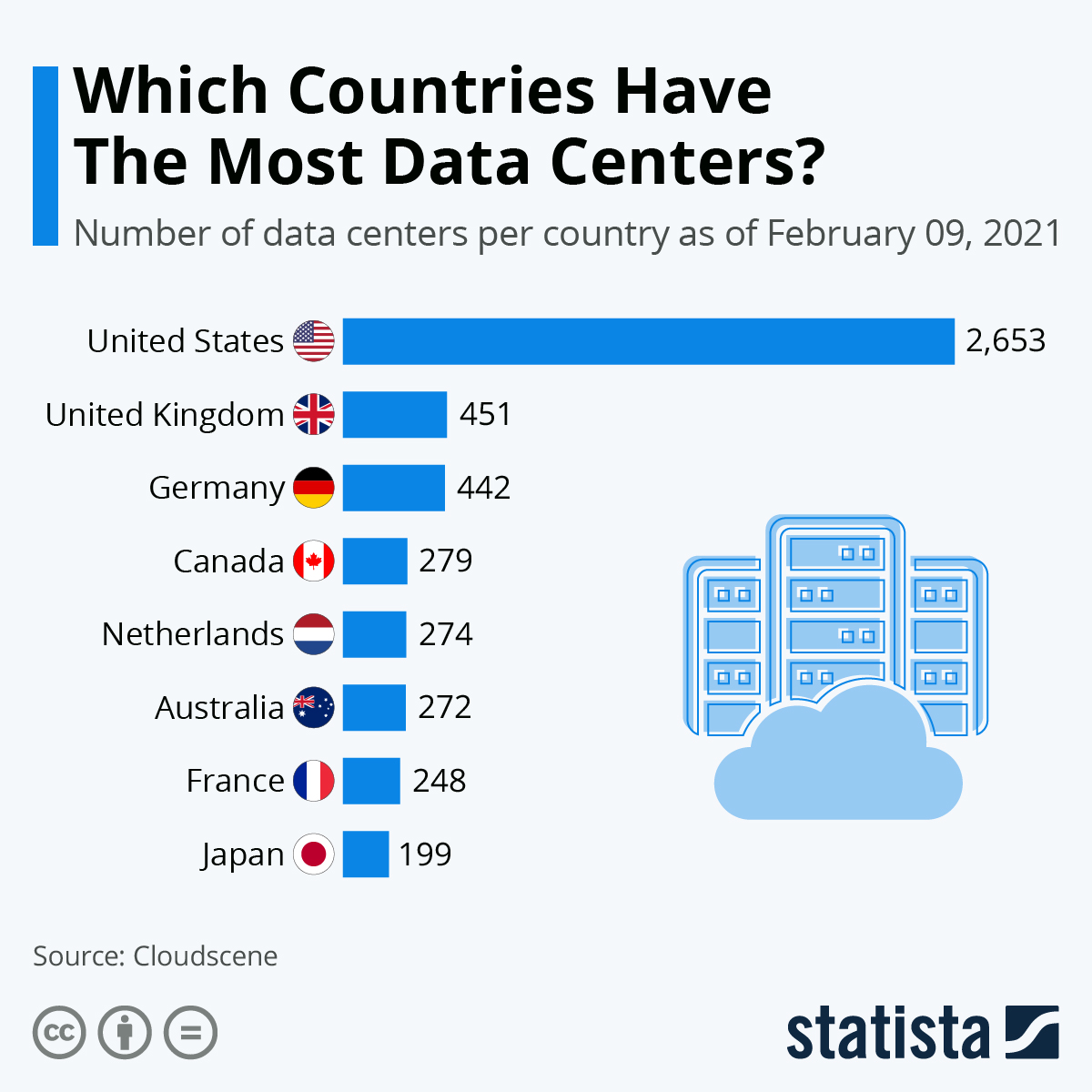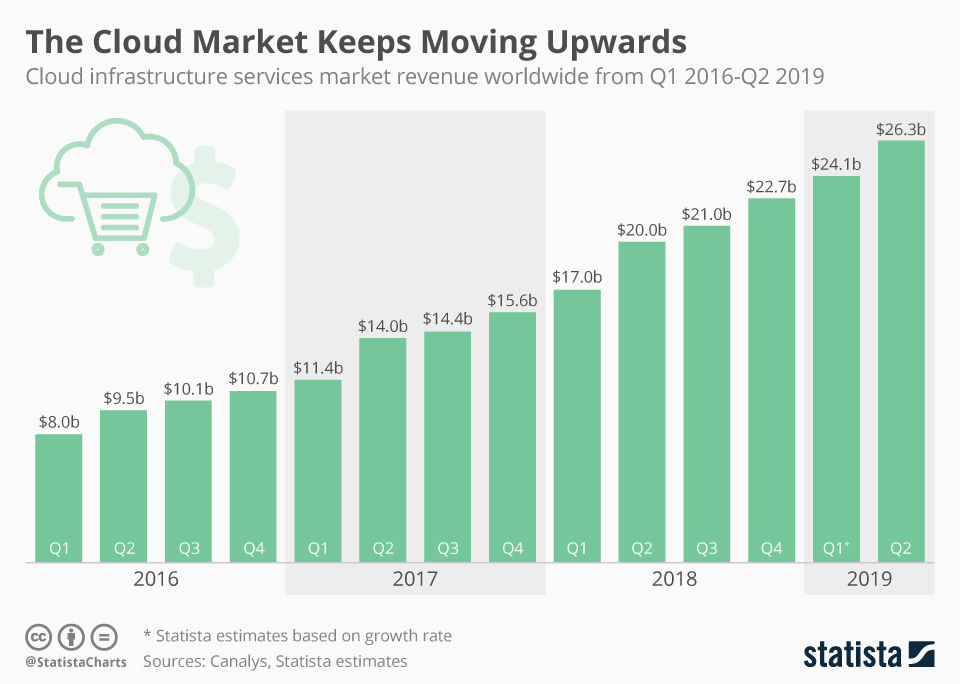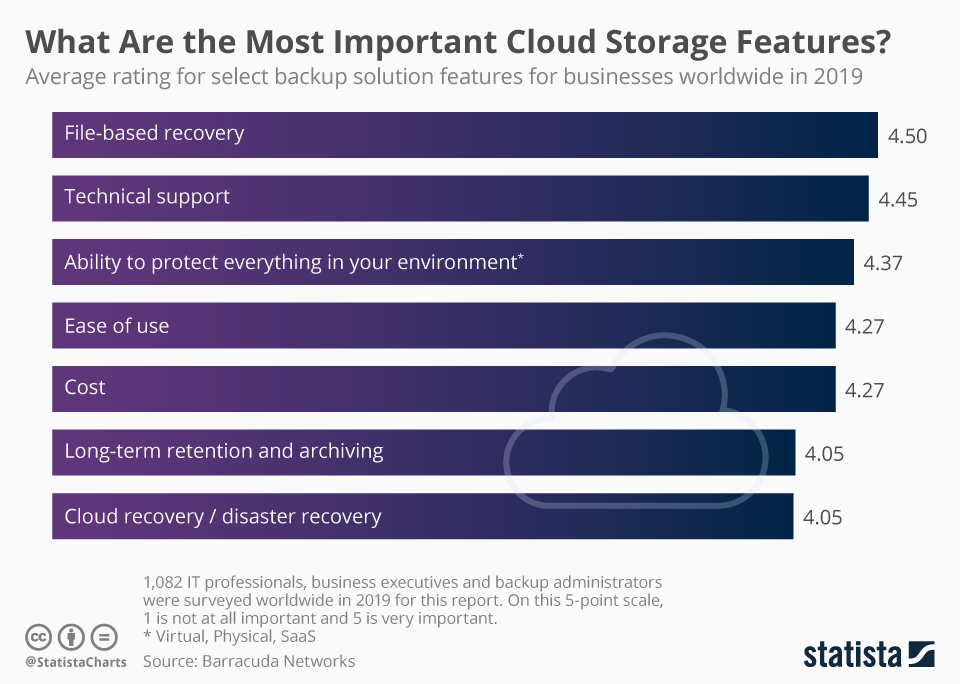This article was published as a part of the Data Science Blogathon
Introduction
As data science learners and enthusiasts, we feel lucky to be alive at a time when data is being produced at a rate higher than ever in the history of mankind.
There was 5 Exabytes of information created between the dawn of civilization through 2003, but that much information is now created every 2 days, and the pace is increasing.
Eric Schmidt in 2010, executive chairman of Google
But what happens when something is produced in such large quantity with this kind of fast pace. The storage becomes an issue, be it for Food-Grain or the Data. This made data engineers and tech companies of the world innovate new ways to address this problem, of data abundance. It was not possible to keep the data in magnetic tapes or optical drives anymore. Hence came huge data centers and server farms (we can’t get very far from our agrarian roots, can we). But taking care of data storage created a new kind of problem. How to access this data? And how to work upon this?
The one silver bullet to kill these two birds is Cloud Computing. Now the data (including big data and very big data as well) gets stored in clouds, and the same clouds offer solutions to work upon it, from anywhere in the world, using the power of the Internet.
Hence, apart from the skills like statistics, analysis, and programming, which a data scientist must possess, he/she is also expected to know about cloud computing. Because the cloud is the new place where organizations are keeping their data.
Given this condition of employable skill set in India, it’s more pertinent than ever that focus on Cloud-based technology and learning these skills take the front seat in tech institutions’ minds.
It’s not a stretch to say that Data Science and Cloud computing go hand in hand.
This is the second article in the three-article series. Read the first article about “What’s in The Cloud? And why everyone wants a piece of it”.
In this article, I will explain what are the different types of cloud, based on their type of Deployment. You now know that the Cloud is nothing but a network of DataCenters that house hundreds of Servers and these data centers are connected in a network using the internet.
“The Cloud” is not one whole thing, but it’s a collection of many clouds owned by many different entities.
And some of the world’s biggest companies own the maximum share of this market. As is apparent from the chart below, only 6 companies, AWS by Amazon, Azure by Microsoft, Google Cloud, Alibaba Cloud, IBM Cloud, and Salesforce, own 75% of the cloud worldwide.
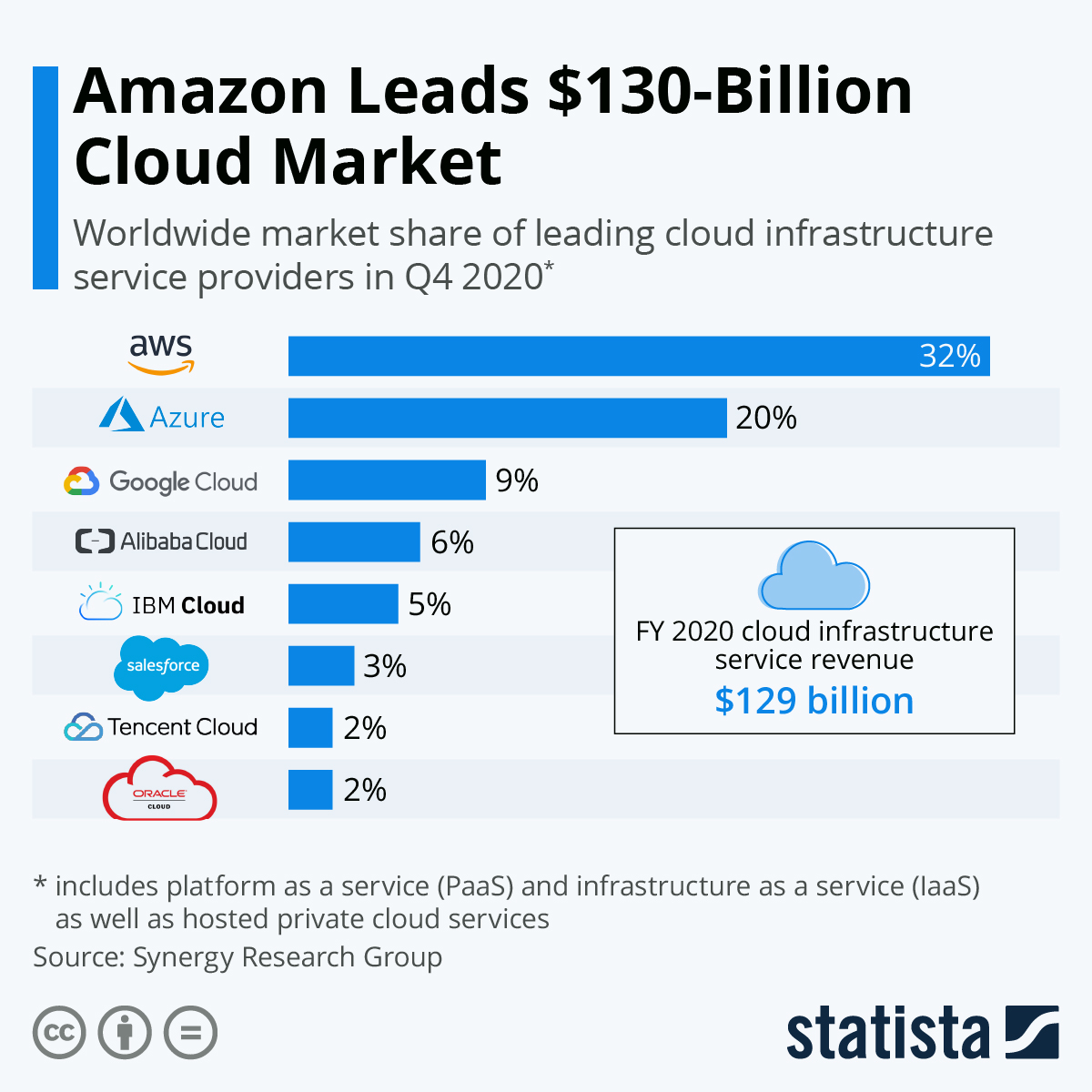
How do you use Cloud Computing every day?
If you use a computer or a mobile, and you are connected to the internet, either at work or home, in all certainty, you are connecting to the cloud, knowingly or unknowingly.
But when it comes to the many application a non-business user uses, the line between the cloud application and application running on a local computer gets blurry. That’s because the cloud has become part of almost everything we use nowadays.
The MS office (Word, Excel, PPT, etc) installed on your computer is local software. But when you use OneDrive, it’s cloud computing. To make matters more confusing, all of this software now have their cloud counterparts as well. The MS Office on the cloud is purely web-based and is called “Office for the web”. The cloud versions of this software are web-based applications of the same Word, Excel, PowerPoint, etc, and accessed using the web browsers (like chrome or safari). When you use the “office for the web”, there is no need to install anything on your computer.
According to a recent survey, 92% of organizations use the cloud today (link to the website for survey results) and most of them have plans to use the cloud more by the next year.
To list a few cloud-based apps that you might be already using
· Google Drive
· iCloud
· OneDrive
· DropBox
· Slack
· Zoom Meeting
· Microsoft Teams
The list is just a few of the hundreds of cloud-based applications we all interact with on daily basis now.
What are Types of Cloud Computing?
Neither all clouds are the same, nor does one size fit all. Several different models, types, and services are there to match the right solutions to your needs. So the first thing you as a user need to decide what type of Cloud do you want to use?
Based on your needs, you need to determine the type of cloud deployment or the cloud computing architecture on which your cloud services will be implemented.
These are a few most popular ways to deploy cloud services:
1. On a Private Cloud
2. On a Public Cloud
3. On a Hybrid Cloud
or
4. On a Community Cloud.
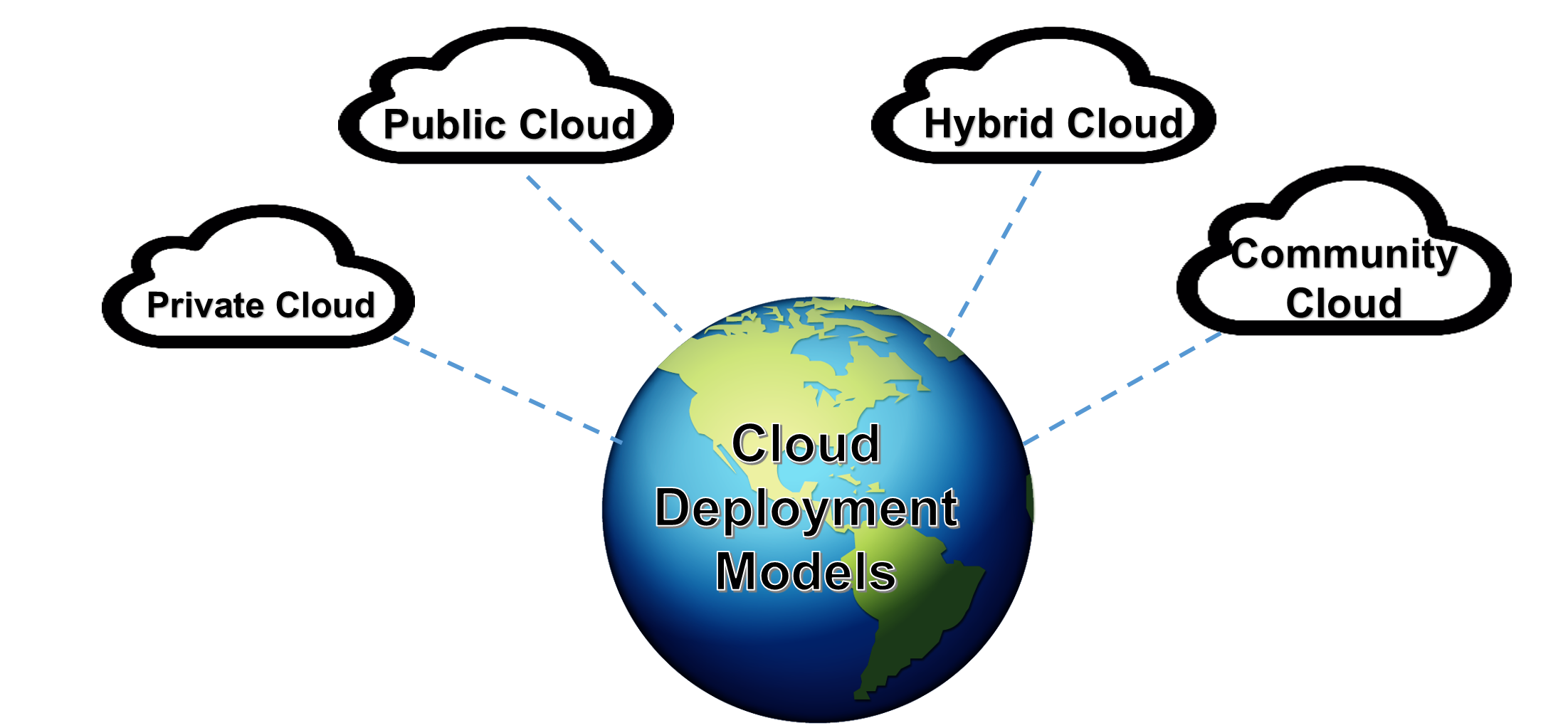
These deployment models differ based on hosting type, implementation type, and who all has access to the cloud. All the clouds work on the same principle, i.e. letting the users access the data and services hosted on servers kept in data centers, using the internet. But they differ in terms of location, storage capacity, levels of privacy, security, and accessibility.
Before we get into the nitty-gritty of individual types of deployment, let me explain them, in brief, using a simple analogy.
Let us assume the clouds as the place we use to live and host our guests. In this case, the private cloud is similar to your home (the house may be owned by you or rented). The way you get privacy at your own home, your data gets at your private cloud.
On the other hand are public clouds, which are just like any hotel. You can rent as big or small space, for as long as you want and pay for that only. There you share space (not the room, or maybe that too if you are in a youth hostel) with other users, and hence your privacy is not as much as you enjoy in your own home.
The hybrid cloud is a mix of both. It is like you renting a hotel when you get more guests than your home can accommodate. So you use both.
And the community cloud is unique, as its one type of public cloud, but only for a particular community. For example, a business hotel at the airport. Travelers with similar needs use this facility (A need-based community).
Now let’s dive deep into each deployment type.
Private Cloud:
A private cloud is the facility of Servers, one or more data centers, or networks used only by one organization.
Remember the house analogy. The Private Cloud is your “Home”. All yours Buddy.
You get maximum privacy and data security here.
Usually, a private cloud would be hosted or housed on the premise of the customer, or you may say the customer’s own data center. But that not the case always. A private cloud could be housed on an independent cloud provider’s infrastructure as well or could be built on rented infrastructure at an offsite, far-off location. What’s common that makes the cloud private is, it’s for only one user. Like your home. If it’s offsite, it’s like your own “farmhouse” property. Only for you, hence fully private.
Why would you use Private Cloud?
Every company has data privacy and safety concerns, some have more and others have less. But for some highly regulated industries, like banking or pharma, sacrificing security and control is not an option. Hence, they need a private cloud. For others, the selling point may be customization.
The apparent advantages of using Private cloud are:
1. You have full control over the hardware and software you use. Because it’s you who purchase it. In comparison the public clouds offer you a deal, take it or leave it.
2. You can customize your hardware and software in any way you feel necessary. On a public cloud, customization is very very limited.
3. You use your firewalls and security protocols. It’s not that private clouds are not prone to the security threat, but the owner and the user have the option to beef up the security as per their industry requirement.
4. Any regulatory compliance and standards related to your industry can be complied with, as you are not limited by the choices offered by the public cloud service provider.
Why would you NOT use Private Cloud?
With all the benefits that come with owning and using a private cloud, there seems no apparent reason why one would not use it.
But like all good things in life, Private Cloud comes at a cost.
The cost of purchasing hardware, software, and the cost of managing it, upgrading it, and customizing it can be too much for a startup, small enterprise, or an individual to bear.
Examples: Dropbox, Instagram, Facebook, and Evernote are some of the prominent Private Cloud user companies. Some of them started from the Public cloud and shifted to private as they grew or acquired.
Public Cloud:
A Public cloud, like any other public place, is shared. They are shared by more than one organization.
Remember the house analogy. The Public Cloud is your “Hotel”. You have more buddies all around you, sharing space with you.
You get minimum privacy and data security is not as good as a private cloud.
A public cloud lets users gain new capabilities, without the need to spend upfront on new hardware or software. Instead, they either pay a subscription fee or rental for pay-per-use. This helps smaller companies, start-ups, and even established businesses to scale without bothering about managing in-house IT capabilities.
Some Popular Public Clouds are Amazon Web Services (AWS), Salesforce’s CRM system, and Microsoft Azure.
Why would you use Public Cloud?
1. You don’t need to own or manage any infrastructure.
2. The public cloud provider owns, maintains, manages, and is fully responsible for the infrastructure on which your data sits, and your workloads run.
3. Provides high bandwidth network connectivity for high performance and fast access to data and applications.
4. Public cloud services are readily scalable and very elastic. They can adjust to meet your changing workload demands.
5. Pay for what you use.
Why would you NOT use Public Cloud?
1. The organizations where the regulation mandated in-house data management.
2. Organizations that have sensitive data and valuable proprietary workflows.
3. If you have too much money to throw around J
Over the last few years, the global public cloud market has grown rapidly. And this trend is forecasted to continue. Industry analyst Gartner predicts that worldwide public cloud revenues will exceed USD 330 billion by the end of 2022.
Examples: Pinterest, Zynga, Netflix are some of the prominent companies which use the Public Cloud. It created ripples when Netflix moved from a private Cloud to AWS Public Cloud. However, they still run some of its DVD and Streaming business privately. This brings us to another type of Cloud, which is neither fully private, not only Public.
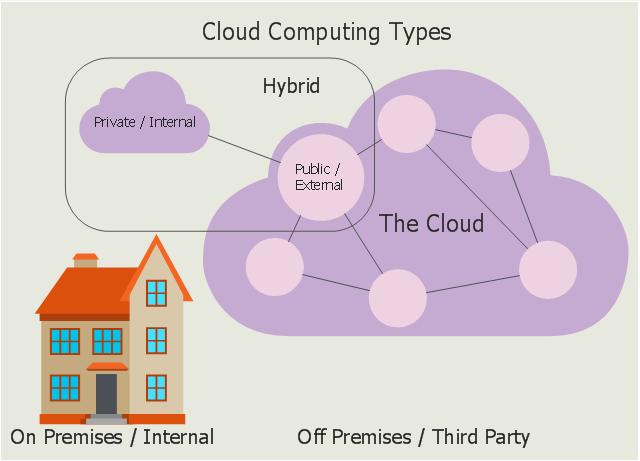
Hybrid Cloud:
Hybrid cloud, as the name suggests, is a mix and match of both Private and Public cloud. There may be many reasons for an organization to use both. The public cloud may be an extension to their private cloud. They may rent a public cloud as a backup to their private cloud, or in addition to tackling a spike in demand, or any other reason.
Remember the house analogy. The Hybrid Cloud is your “Home” + “Hotel”. You have your entire home for you, and when it is not enough for your needs, you rent some space in a hotel as well. Like if you invite many guests for your marriage and your home can accommodate only some of them, you book hotel rooms to accommodate them (Spike in demand).
In its most developed approach, the private and public clouds integrate and create parallel environments, in which applications and data move seamlessly between private and public clouds.
But that’s not always the case. Many companies use them for managing different types of data and workloads. They use the private cloud for sensitive data and the public cloud for managing applications that use the data.
And some use them for being flexible at the time of peak demand. The reasons are many and different for different companies.
Why would you use Hybrid Cloud?
1. Its best of Both Worlds
2. Gives the benefits of both, Private and Public Clouds.
3. Save your security and regulatory concerns with the Private cloud and ride the uncertainty wave using the Public Clouds.
Examples: Most of the big organizations use this approach. They have their own private cloud and they deploy public cloud for many applications. Companies like Netflix, GE, Walmart, Apple (yes, even Apple uses public options from AWS, Microsoft Azure, and Google.)
Community Cloud:
Community Cloud as the name suggests is shared by a community, just like a community kitchen or common playground of a school (shared by one community – Students).
Taking the house analogy forward, community cloud can be thought of as a “working women hostel” (used by one community – working women) or “American Express Lounge at the airport” (used by one community – AMEX cardholders).
In a community cloud, the infrastructure is shared between several organizations from a specific community, who come together with common concerns. The concerns may be security, compliance, jurisdiction, common application, etc. This is controlled and used by a group of organizations that have shared interests. The costs are spread over fewer users than a public cloud but more than a private cloud.
Why would you use Community Cloud?
1. Cost-effective as it’s shared.
2. Flexible and Scalable as its compatible with all in the community
3. It’s more secure than a public cloud as it has Industry (community specific) level security protocols.
Examples: Government organizations in one country using one community cloud.
Conclusion:
We saw “What’s in The Cloud? And why everyone wants a piece of it” in the first part article on cloud computing. This is the second part where we saw all about the deployment models, Private, Public, Hybrid, and Community cloud. There are some other types as well, as the boundaries in the cloud are disappearing faster than anyone imagined. However, these 4 types explain how the Cloud Networks are deployed by any organization or individuals. The benefit and shortcomings of each type pose a challenge and make the other type feasible. But at the same time it gives the choice in the hands of users, and all users for that matter, irrespective of how deep pockets you have. In that sense, cloud computing is an equalizer. Giving opportunity to startups and newcomers as it never existed in history.
In the third and the last part of the article, we will learn about what are different kinds of services cloud computing platforms offer, which come in the baskets named as SaaS (Software-as-a-Service), PaaS (Platform-as-a-Service), IaaS (Infrastructure-as-a-Service), and Serverless computing.
“Cloud is about how you do computing, not where you do computing.” – Paul Maritz, CEO of VMware
About the Author: I am Nilabh Nishchhal. I like making seemingly difficult topics easy and write about them. Check out more at https://www.authornilabh.com/. My attempt to make Python easy and Accessible to all is “Python Made Easy”.
The media shown in this article are not owned by Analytics Vidhya and are used at the Author’s discretion.

